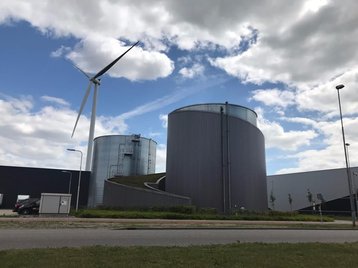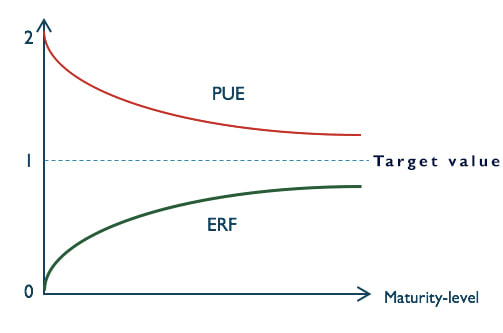A low Power Usage Effectiveness (PUE) factor has been the highest achievement for almost every data center operator for years. ‘The lower the better’ has been our battle cry. It is all about design PUEs, real-time PUEs, and historical PUEs, completed with a list of other terms.
The Green Grid has formulated a close definition for this industry standard explaining what PUE is and what the actual story about PUE is. Despite this definition professionals still beg to differ on how and when it is measured correctly. Each data center operator has its own way of presenting the numbers and you can not compare one datacenter another.
At DCValley we step up the game. Of course PUE remains an important measure (if properly substantiated and correct) to show energy efficiency of a data center. However, the PUE is ‘limited’ to the energy used to keep the data center running and the IT load of users in the data center. That is no longer sufficient.
Residual heat
Therefore, let us discuss residual heat first. As we all know the most important by-product of data centers is heat. As long as it is not re-used, as it is still the case with most data centers, it is difficult to say that this really contributes to the energy efficiency of the facility. According to DCValley, the sole discussion about the PUE of a data center is therefore outdated. Our statement is: a truly efficient data center uses energy in the most efficient way but also provides energy.
Re-using heat produced by the IT equipment is the best example. DCValley’s first data center, centrally located in the Netherlands between Ede and Veenendaal, will open mid-2018. In addition to using an Aquifer Thermal Energy Storage (ATES), DCValley will also return all produced heat to the Heat Cold Network (HCN) on the business park. In addition to PUE we can then also calculate the so-called Energy Re-use Factor (ERF) for DCValley.
DCValley’s goal is to achieve the highest possible ERF next to the lowest possible PUE. In our opinion this should be the new standard in the assessment of data center sustainability. Data centers worldwide consume almost 3% of the total energy supply and this number will only increase. Huge amounts of valuable energy in the form of usable heat will remain unused.
So using the PUE as the only standard is outdated. DCValley’s design and construction partner Unica, empowers a lot of knowledge and techniques to create data centers that can survive and flourish in our energy ecosystem of the future, as a customer and supplier. But the willingness of data centers to engage with energy companies and building owners in the area is even more important than knowledge and technology.
ERF is measured from 0 to 1. 0 meaning none of the heat is re-used, and 1 meaning that a 100% of the produced heat is re-used.
In order to adapt a data center into a future energy environment, another mindset and way of development is required. However it has proven to be complicated and expensive to combine or apply these techniques into existing data centers.
DCValley’s Heat Cold Network
DCValley uses the ATES/HCN for cooling and for returning the heat. The ATES DCValley will be using supplies water at a constant temperature of 11 °C. The total capacity of the ATES/HCN is more than sufficient to provide 100% of the cooling once the data center has been fully expanded. 100% of produced heat is collected and despite the relatively low temperature of the return-water (approx. 30 °C), it is used to heat other buildings on the business park.
Embracing and combining these techniques is obviously location-bound. ATES/HCN facilities are not present everywhere. However as it is a sustainable alternative to natural gas heating, a high increase over the next few years is to be expected. For many reasons to the relatively limited surface of our country it will become more attractive to build data centers outside the metropolitan areas. This offers more flexibility and, of course, the ability to build ATES/HCN installations close by.
The latency to major nodes is negligible, while the area and data centers are highly accessible. This enables us to take an important step forward to truly sustainable data centers.
This opinion was written by Vincent Wammes, managing director at DCValley, Deniz Arslan, commercial manager at DCValley and Klaasjan van der Maas, program manager at Unica Fastcom



